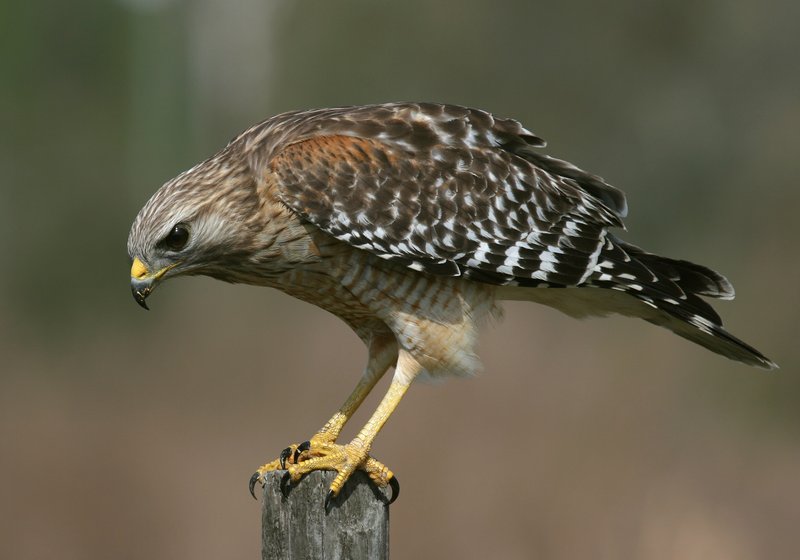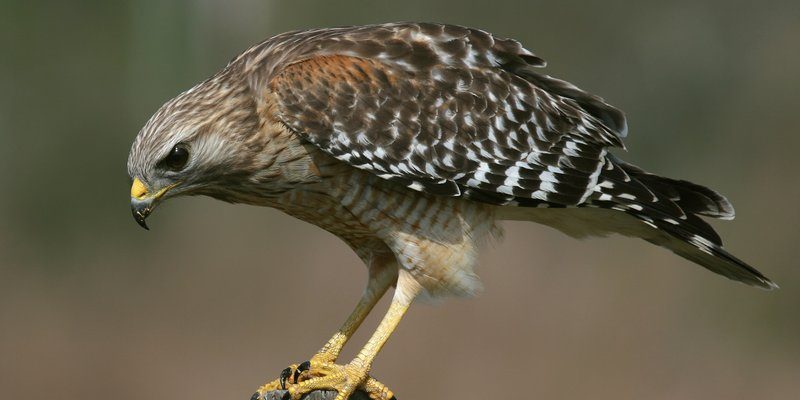
So, how do hawks manage to thrive in diverse landscapes, from dense forests to open fields and even bustling cities? It all boils down to their remarkable adaptations—special features and behaviors that allow them to hunt, nest, and navigate their surroundings. Let’s dive into the fascinating world of hawks and explore how these birds have tailored themselves to fit perfectly into their ecosystems.
Physical Adaptations: Nature’s Design
Hawks have some extraordinary physical traits that make them exceptional hunters. First off, let’s talk about their sharp talons. These curved claws are designed for gripping and tearing, allowing hawks to catch and hold onto their prey with impressive strength. Imagine trying to catch a fish with your bare hands—it’s not easy! But a hawk’s talons do the job efficiently.
Another impressive feature is their keen eyesight. Hawks can spot a mouse from a mile in the air! This incredible vision is due to the unique structure of their eyes, which have more cells for detecting light and movement than humans. It’s like having super-powered binoculars built right into their heads. You might wonder how this helps them adapt: well, it allows them to hunt effectively, even in varying light conditions.
Lastly, let’s not forget about their strong wings. Hawks have broad wings that provide excellent lift, enabling them to soar for hours without flapping. This ability allows them to cover vast distances while searching for food. In windy areas, this is especially useful. By adapting to the air currents, they can conserve energy and focus on spotting their next meal.
Behavioral Adaptations: Clever Strategies
Hawks are not just remarkable for their physical traits; their behaviors also play a critical role in how they adapt to their environments. One fascinating behavior is their hunting techniques. Different species of hawks have developed various strategies tailored to their surroundings. For instance, the Red-tailed Hawk often hunts by perching quietly on a high branch, scanning the area before swooping down to catch unsuspecting prey. This sit-and-wait approach works well in open fields and forests alike.
Then there’s the agility of smaller hawks, like the Sharp-shinned Hawk, which are known for their quick, darting flights through dense vegetation to surprise birds. This adaptability allows them to make the most of their surroundings, whether they’re in a park or a suburban area. It’s as if they’ve taken the phrase “think on your feet” to heart, using their environment to their advantage.
Moreover, hawks often exhibit territorial behaviors. They claim and defend specific areas where they hunt and nest, ensuring that they have ample resources. By maintaining a territory, they reduce competition for food, which is crucial for survival. You might notice them making loud calls to warn off other hawks—it’s their way of saying, “This is my space!”
Geographic Variations: Adapting to Different Habitats
Hawks can be found in various habitats around the world, and their adaptations often reflect these geographic differences. In forested areas, for example, hawks like the Cooper’s Hawk have shorter wings and longer tails, enabling them to maneuver through trees. It’s like being a pro at navigating a crowded room—quick turns and agile movements make all the difference.
On the flip side, hawks living in open fields, such as the Ferruginous Hawk, have broader wings and longer legs. These adaptations allow them to soar high above the terrain, scanning for small animals like rabbits or rodents. It’s a clever design that maximizes their hunting efficiency in wide-open spaces.
Then we have urban-dwelling hawks, like the Peregrine Falcon, which nest on skyscrapers. These birds have adapted to city life by using man-made structures for perches and nests. You might find them hunting pigeons or other birds that thrive in urban environments. By adjusting to city living, these hawks have proven they can thrive even in the hustle and bustle of human life.
Social Adaptations: Communication and Group Dynamics
While hawks are often solitary hunters, they also exhibit social behaviors that help them thrive in their environments. Communication is key here, and hawks use a variety of calls and body language to convey messages to one another. For example, during mating season, male hawks perform aerial displays to attract a partner. It’s like a dance in the sky, showing off their fitness and skills.
In some cases, hawks will even hunt together. Species like the Harris’s Hawk have a unique social structure where family groups work as a team to catch prey. They’ll take turns flushing out animals or corral them into a corner, making it easier for one hawk to swoop in for the catch. This cooperative behavior is an excellent example of how social dynamics can enhance survival.
Moreover, hawks can also adjust their feeding habits based on the availability of prey. If certain food sources are scarce, they can switch to alternative prey types. This flexibility is crucial for survival, allowing them to adapt quickly to changing conditions in their environment.
Impact of Climate Change: Adjusting to a Changing World
As our planet changes, hawks must also adapt to new challenges posed by climate change. Rising temperatures and shifting weather patterns can affect their habitats, food sources, and migration behaviors. For instance, some hawks have started migrating earlier in the spring as temperatures warm up, allowing them to take advantage of earlier breeding opportunities.
However, these changes aren’t always beneficial. For example, extreme weather events can disrupt their nesting sites, leading to decreased reproduction rates. Additionally, changes in prey availability can force hawks to travel further or explore new territories, which can be risky.
You might be wondering how these birds cope with these challenges. Hawks’ adaptability is key. Their ability to adjust their hunting techniques, nesting behaviors, and migration patterns will determine their survival in a rapidly changing world. By staying flexible and resourceful, they can continue to thrive, even when faced with uncertainty.
Conservation Efforts: Ensuring Their Future
Given the challenges that hawks face due to habitat loss and climate change, conservation efforts are crucial for their survival. Many organizations are working to protect hawk habitats, create awareness, and promote responsible behavior in humans to minimize disturbances.
For instance, protecting nesting sites and feeding grounds can significantly impact hawk populations. When we take steps to preserve these vital areas, we’re not just helping hawks but supporting the entire ecosystem. Initiatives like reforestation and creating wildlife corridors allow hawks and other wildlife to flourish.
Moreover, educating the public about hawks and their importance can lead to a better understanding of how we can coexist with these magnificent birds. Every small action counts, whether it’s reducing pesticide use, supporting local wildlife organizations, or simply advocating for natural spaces.
In conclusion, hawks are incredible creatures that have mastered the art of adaptation. From their physical traits to their behaviors and even their social structures, they’ve designed themselves to thrive in various environments. As climate change and human activities challenge their existence, it’s our responsibility to ensure that future generations can continue to marvel at these magnificent birds. Every step we take toward conservation not only benefits hawks but also enriches our own lives.

